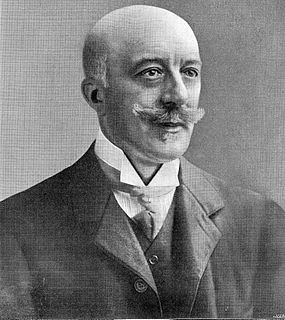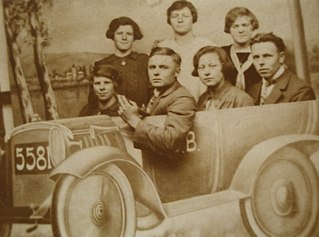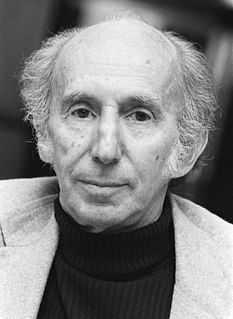
The Royal Netherlands Academy of Arts and Sciences is an organization dedicated to the advancement of science and literature in the Netherlands. The academy is housed in the Trippenhuis in Amsterdam.
The Royal Academies for Science and the Arts of Belgium (RASAB) is an association which promotes and organises science and the arts in Belgium by coordinating the national and international activities of its constituent academies such as the National Scientific Committees and the representation of Belgium in international scientific organisations.
Royal Academy may refer to:

Cyrillus Gustave Emile "Cyriel" Buysse was a Flemish naturalist author and playwright. He also wrote under the following pseudonyms: Louis Bonheyden, Prosper Van Hove and Robert Palmer.

Johan Michiel Dautzenberg was a Belgian writer. Professionally he was successively secretary, clerk, teacher, private teacher, and bookkeeper.

Herman Louis Cesar Teirlinck was a Belgian writer. He was the fifth child and only son of Isidoor Teirlinck and Oda van Nieuwenhove, who were both teachers in Brussels. As a child, he had frail health and spent much of his time at the countryside in Zegelsem, with his paternal grandparents. He was nominated for the Nobel Prize in Literature six times.

The Palace of the Academies is a neoclassical palace in Brussels, situated on the Place des Palais / Paleizenplein by the Royal Palace of Brussels and the Brussels Park. Today it houses five Belgian academies including the Royal Academies for Science and the Arts of Belgium. In English language context the Academy Palace is also often called Academy House.

David t'Kindt (1699–1770), architect, practised his profession mainly in Ghent, Belgium. His work is mainly in the Rococo style and includes the following buildings:

Raymond De Belser, pseudonym Ward Ruyslinck, was a Belgian writer. He is the son of Leo De Belser and Germaine Nauwelaers. His father was a librarian at an oil company, and Ward Ruyslinck grew up in a Roman Catholic family. During the Second World War, the family moved to Mortsel.

Maurice, Baron Gilliams was a Flemish writer and poet.
The Flemish or Flemings are a Germanic ethnic group native to Flanders, in modern Belgium, who speak Flemish, but (mostly) use the Dutch written language. They are one of two principal ethnic groups in Belgium, the other being the French-speaking Walloons. Flemish people make up the majority of the Belgian population. Historically, all inhabitants of the medieval County of Flanders were referred to as "Flemings", irrespective of the language spoken. The contemporary region of Flanders comprises a part of this historical county, as well as parts of the medieval duchy of Brabant and the medieval county of Loon.
Maurits Gysseling was an influential Belgian researcher into historical linguistics and paleography. He was especially well known for his editions and studies of old texts relevant to the history of the Dutch language, and also for his very detailed analyses of historical place-names and their probable origins.

Jeannine Clementine Theodora Beeken is a Flemish linguist. Her work in Dutch linguistics includes amongst others the development of the first academic software teaching platform for Dutch, esp. Dutch syntax, in the late 1980s, the discovery of three additional objects in contemporary Dutch and the rules for the revised Dutch spelling system, Groene Boekje 2005.
The Royal Academy of Science, Letters and Fine Arts of Belgium is the independent learned society of science and arts of the French Community of Belgium. It is also called in shorthand Royal Academy of Belgium (ARB) or La Thérésienne from Maria Theresa. The Dutch-speaking counterpart for the Flemish Community in Belgium is called Royal Flemish Academy of Belgium for Science and the Arts. In 2001 both academies founded a joint association for the purpose of promoting science and arts on an international level: The Royal Academies for Science and the Arts of Belgium (RASAB). All three institutions are located in the same building, the Academy Palace in Brussels.

René Tavernier was a Belgian geologist and stratigrapher. He was a professor at the State University of Ghent, a corresponding member of the Royal Flemish Academy of Belgium for Science and the Arts, and one of the founders of the Belgian Society for Soil Science.

Jan Vaerman was a Flemish mathematician. He worked as a school teacher in Bruges and, between 1693 and 1717, in Tielt. He wrote about geometry, arithmetic, geography, planimetry, astronomy, navigation, defensive walls and solar watches.

Gabriëlle Demedts was a Flemish Belgian poet. She was a sibling of André Demedts. In 1934 she wrote her first poems and in 1937 she publish her first work "Een gevangene zingt". As a young child she was struck by Poliomyelitis which has determined the rest of her life.

In Belgium, academies are publicly funded learned societies, often divided by academic discipline or linguistic group. Besides holding meetings, many publish academic monographs, peer-reviewed journals and hold conferences. Membership is usually by election and non-Belgians are usually admitted only as corresponding members. Originating during the Enlightenment, the concept can be traced to the Imperial and Royal Academy of Brussels which was the first academy in Belgium, founded in 1772 by the Empress Maria Theresa when the country was under Austrian rule.




















